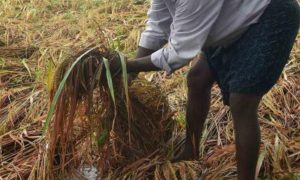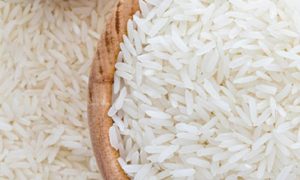Stubble burning returns in Punjab after wheat harvesting; 9,247 field fires and counting

Experts said field fires after wheat harvesting could easily be avoided with a little push from the government.
Made from wheat stubble, ‘turdi’ (dry fodder) is considered the best for cattle because of its nutritional value but farmers in Punjab have once again resorted to stubble burning after wheat harvesting this year.
From April 6 to May 15, 9,247 field fires were reported in the state. As many as 507 fires were recorded on May 15 against the 47 fires the same day last year, suggesting that field fires would continue in Punjab for more days this season. Last year, 14,117 field fires were reported during the above-mentioned period. In 2021, 7,808 fires were reported.
Though there has been a drop of 34 per cent in field fires this year, experts said this was down to harvesting starting late this time due to unseasonal heavy rains and hailstorms.
According to the Punjab Pollution Control Board, the highest number of fires was reported from the Moga district (932). Gurdaspur (770), Amritsar (710), Firozpur (685), Ludhiana (624), Sangrur (614), Bathinda (559), Barnala (527), Muktsar (521), Tarn Taran (413), Fazilka (412), Patiala (383), Jalandhar (334), Hoshiarpur (332) and Kapurthala (292) followed.
Rupnagar recorded the lowest number of fires — 11. Mohali (18), NawanShahr (62), Pathankot (76), Fatehgarh Sahib (83), and Malerkotla (161) are the other districts recording lower numbers.
The highest number of fires in a single day this season was recorded on May 11 (1,554). May 6 (1, 221), May 13 (1,113), May 10 (1,019), May 5 (892), May 12 (752) and May 8 (604) came next.
Experts said the farmers are not burning wheat stubble but only the upper portion of the roots. After making fodder, a few centimetres of the upper part of the roots are left in the field, and farmers set that portion on fire and, in the process, burn the soil too.
“This burning can easily be avoided with a little push from the government. It burns soil, organic matter in the field and several soil-friendly insects. Also, it leads to the loss of nitrogen and diammonium phosphate (DAP) and potassium, besides generating high amounts of carbon dioxide, carbon monoxide, and black carbon, leading to environmental pollution. It also affects the crop productivity and soil fertility,” said Dr Amrik Singh, district training officer, Gurdaspur, Department of Agriculture.
He added that if the farmers don’t burn it, the leftovers can be managed by ploughing the field once or twice and subsequently with mild irrigation, which leads to mixing the leftover in the soil before the next sowing.













